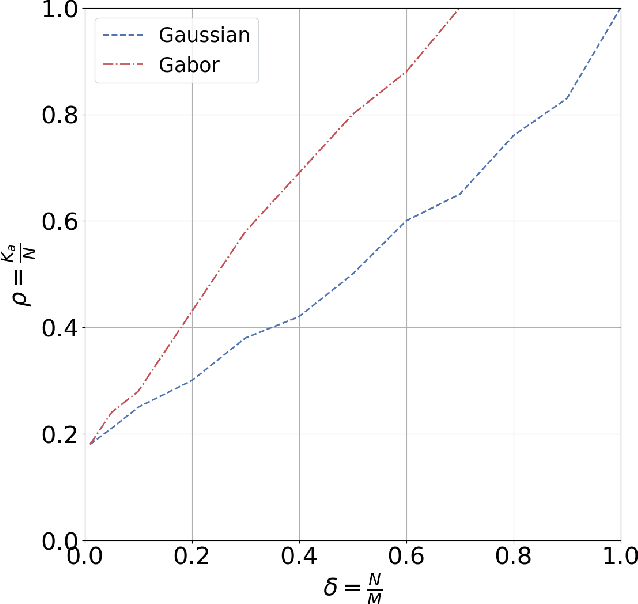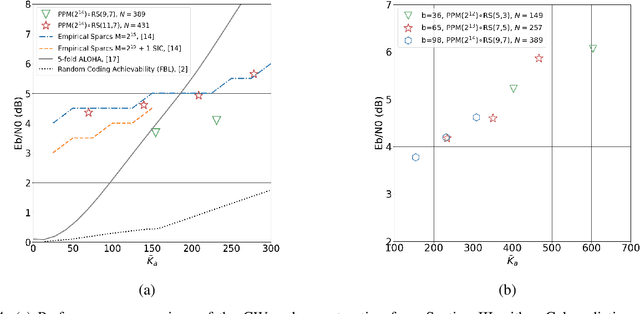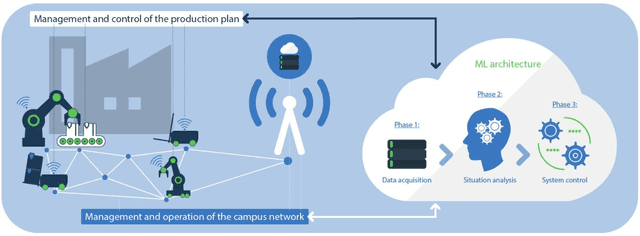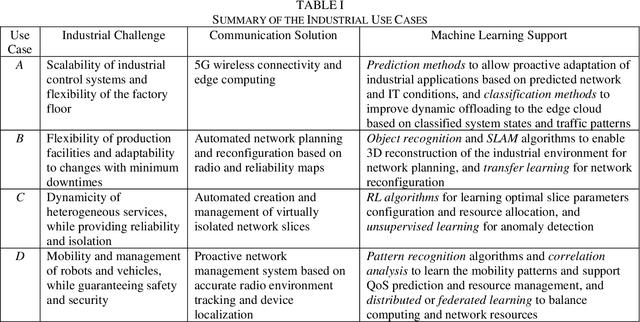Patrick Agostini
BiSPARCs for Unsourced Random Access in Massive MIMO
Apr 27, 2023Abstract:This paper considers the massive MIMO unsourced random access problem in a quasi-static Rayleigh fading setting. The proposed coding scheme is based on a concatenation of a "conventional" channel code (such as, e.g., LDPC) serving as an outer code, and a sparse regression code (SPARC) serving as an inner code. The scheme combines channel estimation, single-user decoding, and successive interference cancellation in a novel way. The receiver performs joint channel estimation and SPARC decoding via an instance of a bilinear generalized approximate message passing (BiGAMP) based algorithm, which leverages the intrinsic bilinear structure that arises in the considered communication regime. The detection step is followed by a per-user soft-input-soft-output (SISO) decoding of the outer channel code in combination with a successive interference cancellation (SIC) step. We show via numerical simulation that the resulting scheme achieves stat-of-the-art performance in the massive connectivity setting, while attaining comparatively low implementation complexity.
Constant Weight Codes with Gabor Dictionaries and Bayesian Decoding for Massive Random Access
Jul 26, 2022



Abstract:This paper considers a general framework for massive random access based on sparse superposition coding. We provide guidelines for the code design and propose the use of constant-weight codes in combination with a dictionary design based on Gabor frames. The decoder applies an extension of approximate message passing (AMP) by iteratively exchanging soft information between an AMP module that accounts for the dictionary structure, and a second inference module that utilizes the structure of the involved constant-weight code. We apply the encoding structure to (i) the unsourced random access setting, where all users employ a common dictionary, and (ii) to the "sourced" random access setting with user-specific dictionaries. When applied to a fading scenario, the communication scheme essentially operates non-coherently, as channel state information is required neither at the transmitter nor at the receiver. We observe that in regimes of practical interest, the proposed scheme compares favorably with state-of-the art schemes, in terms of the (per-user) energy-per-bit requirement, as well as the number of active users that can be simultaneously accommodated in the system. Importantly, this is achieved with a considerably smaller size of the transmitted codewords, potentially yielding lower latency and bandwidth occupancy, as well as lower implementation complexity.
Leveraging Machine Learning for Industrial Wireless Communications
May 05, 2021


Abstract:Two main trends characterize today's communication landscape and are finding their way into industrial facilities: the rollout of 5G with its distinct support for vertical industries and the increasing success of machine learning (ML). The combination of those two technologies open the doors to many exciting industrial applications and its impact is expected to rapidly increase in the coming years, given the abundant data growth and the availability of powerful edge computers in production facilities. Unlike most previous work that has considered the application of 5G and ML in industrial environment separately, this paper highlights the potential and synergies that result from combining them. The overall vision presented here generates from the KICK project, a collaboration of several partners from the manufacturing and communication industry as well as research institutes. This unprecedented blend of 5G and ML expertise creates a unique perspective on ML-supported industrial communications and their role in facilitating industrial automation. The paper identifies key open industrial challenges that are grouped into four use cases: wireless connectivity and edge-cloud integration, flexibility in network reconfiguration, dynamicity of heterogeneous network services, and mobility of robots and vehicles. Moreover, the paper provides insights into the advantages of ML-based industrial communications and discusses current challenges of data acquisition in real systems.
 Add to Chrome
Add to Chrome Add to Firefox
Add to Firefox Add to Edge
Add to Edge